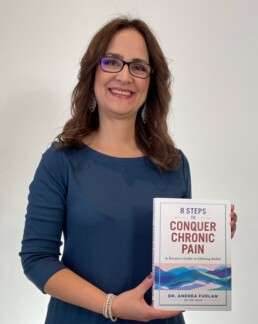Introducing Dr. Andrea Furlan, a physician and Senior Scientist. Learn more about her journey, delve deeper into her extraordinary accomplishments, and uncover future prospects she envisions for the realm of pain study.
Dr. Andrea Furlan is a physician and Senior Scientist at the Kite Research Institute, Toronto Rehabilitation Institute at the University Health Network (UHN). She completed her residency in Physiatry at the University of São Paulo, Brazil and her PhD in Epidemiology at the University of Toronto, Canada. Dr. Furlan’s research largely focuses on Rehabilitation Medicine and alternative treatments for chronic pain. She has published over 100 peer-reviewed articles and has received awards such as the 2020 Pain Society of Alberta Pain Excellence Award, and the 2021 Canadian Pain Society Excellence in Pain Mentorship Award. In addition to her academic achievements, Dr. Furlan is an excellent and well-known science communicator, with a YouTube channel that teaches her 500,000 subscribers about chronic pain and its management.
We asked Dr. Furlan a few questions about her career:
What inspired you to focus on pain?
In my teen years, I suffered from terrible, debilitating, monthly menstrual cramps. I missed many social events, school days, exams, and the medications destroyed my stomach. When I got to medical school (in Brazil) I came across physiatry, the medical specialty for people with disabilities. As an intern in general internal medicine, one of the patients I admitted for investigation had pain all over her body. She ended up getting a lot better when a physiatrist came and did a single session of acupuncture. I became fascinated by the endogenous opioid system and decided to become a pain doctor, and physiatrist.
What have been some of the great highlights in your career thus far?
When I came to Canada, my first job was with the Cochrane Collaboration Back Review Group. After authoring many Cochrane reviews, I was invited to lead the research team for the first Canadian Opioid Guideline, which was published in 2010. In 2013, I heard about Project ECHO in the US. I went there with a group of colleagues from Canada, and when we returned, we started the first ECHO hub in Canada, for Chronic Pain and Opioid Stewardship, and soon we will be celebrating 10 years. We now have expanded ECHO to more than 30 conditions in Ontario, and the ECHO chronic pain has expanded to many other Canadian Provinces. More recently, I decided to start a YouTube channel, and write a book. My channel has just passed 550K subscribers and 45 million views.
What do you think is the next big thing (therapy, discovery, field of study) for pain?
I have no doubt that the next big thing will be how we tap into the brain to change neuroplasticity of pain. Every time I open a pain journal there are so many new discoveries of the amazing ability of the brain and its connections to the immune system, neuroendocrine system, and gut microbiome. I can’t keep up with all the neuroscience publications, but I think we will have a revolution in the way we treat pain, especially chronic pain.



